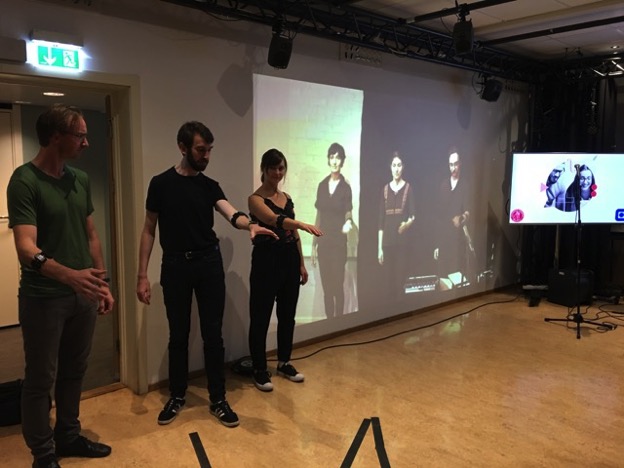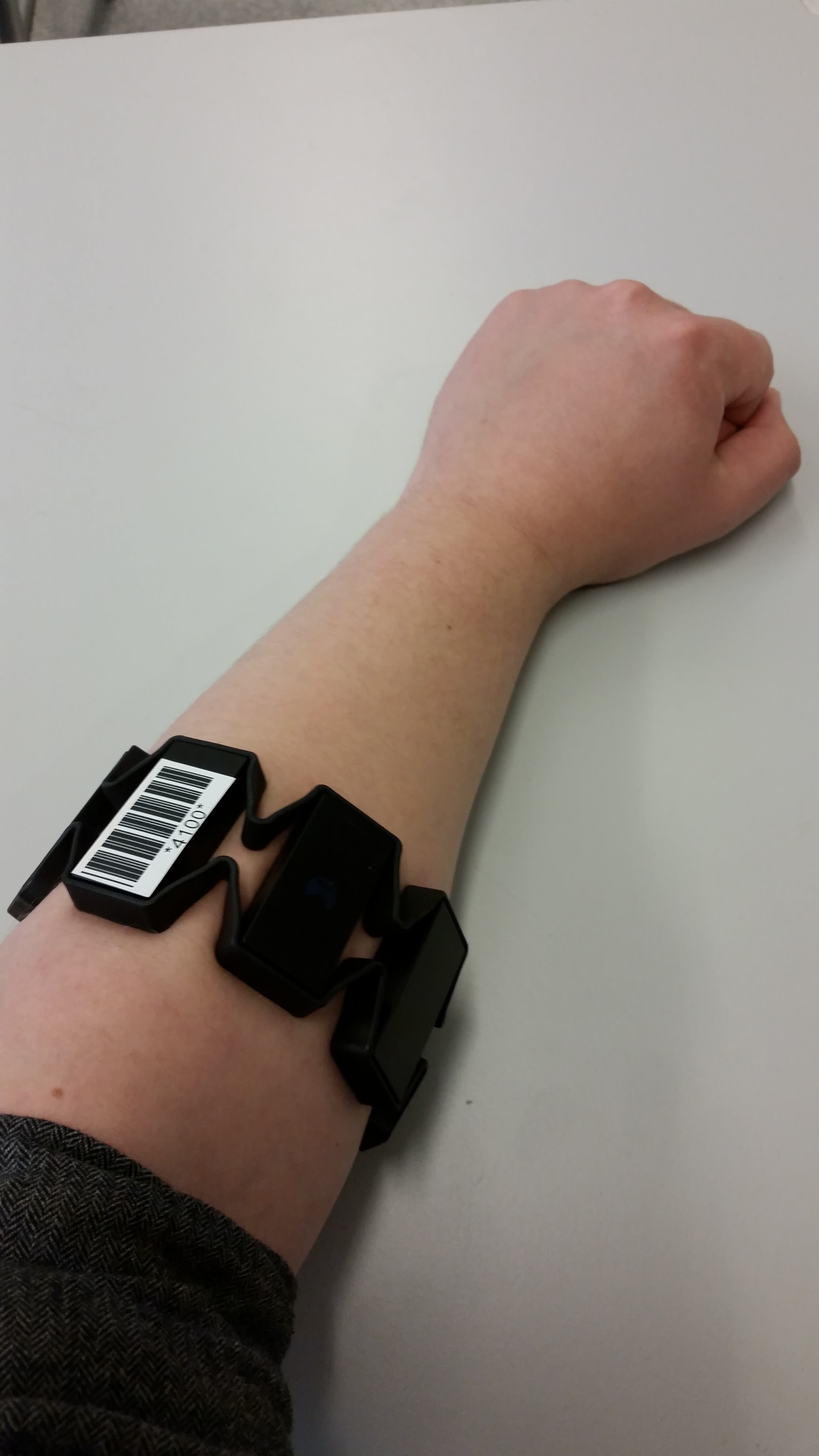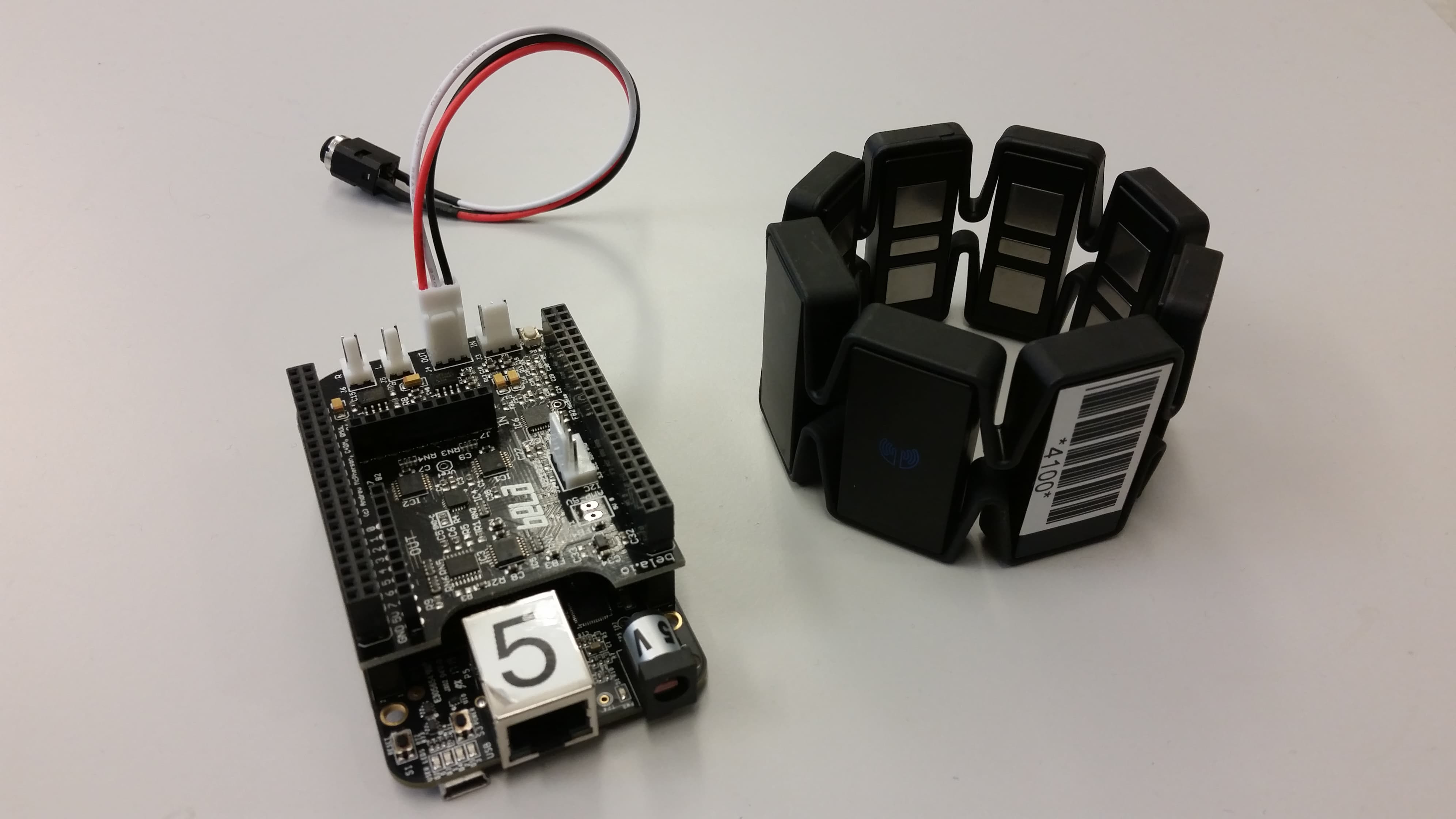Stillness under Tension, An interactive performance between two cities

Keywords: wireless, bluetooth, electronic artists, dance, Bela, Myo armbands, micromotion.
Explaining the concept/context
On 29th of August, 2018, Eigil, Karolina and Mari from the Masters programme in MCT, together with three professors, Alexander, Charles and Anna, performed with the Muscle Band at the Portal opening ceremony at the University of Oslo and NTNU in Trondheim. This was a musical performance that took place in two different places at the same time. How is that possible? Who would have thought that our muscles are potentially able to communicate, even across two campuses in two cities? This is one of the things to explore and to create in this new course of study: welcome to the master program ‘Music, Communication and Technology’. First we should explain what the Portal really is. Imagine that you walk into a room in Oslo, and on the wall in front of you, you look into a room in Trondheim, stacked with people. You wave at them, and they wave back at you. You say “hello!”, and they answer, loud and clear! Then, some of the people on the wall can pick up a guitar and ask you if you want to play some music. Then you play together, both in Trondheim and in Oslo, just as if you were physically together in the same room! This is basically what the Portal is about!
Here is a short video from the performance:
(Video: Dmitry Vasilev)
How the system works
So, what was this Muscle Band Performance all about? Not all of the members were body builders, we must admit. We were six performers all together, three in Trondheim and three in Oslo. Each one wore a Myo bracelet and created together a 9 minutes long musical composition, by nothing more than standing still and changing the droning sounds with our arm positions. Myo is a bracelet that acts as a sensor and picks up the position and muscle tension of our arms. Charles Martin, Alexander Refsum Jensenius and Jim Torresen (a research intersection of informatics and musicology) deveolped a method that would allow converting muscle tension and orientation of the bracelets into different sounds by wirelessly connecting them with Bela, a small computer running the program and generating the sound. Each of us wore an armband at one of our arms, and to say it simply, these bracelets were our instruments. To make any sound at all we had to stand as still as we could. Then we could modify the timbre of the sound by gently flexing our arm muscles. The whole scenario must have looked and sounded like it was taken right out of a science fiction movie!

Reflecting on the performance and the connection between Trondheim-Oslo
The set-up during the ceremony was a work in progress, with the Trondheim portal room not being finished. Therefore the equipment was moved into the large studio at Olavskvartalet. As for the sound quality, the signal being transmitted would have been almost identical if it was all made in the same room, except for a tiny delay in time between the cities. However, the audience situations were quite different, since in Oslo the audience saw the local performers standing next to a projection of the performers in Trondheim. This probably gave a much more immersive experience of seing the muscle band playing together. In Trondheim, this scene was shown on a separate screen, making it a bit more distant. One thing to note on the performance was the link between each performers actions and the sound being made. Our own experience during sound testing and the performance itself was quite different regarding this, and with more people making sound in the performance it was more difficult to hear what we as individuals were doing within the large droning sound.

References
For more technical information on the performance see this link: Composing an Ensemble Standstill Work for Myo and Bela
